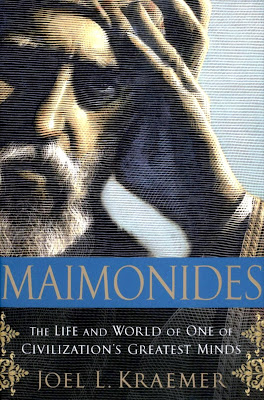
The Hardy Boys Mysteries, 1927-1979: A Cultural and Literary History
By Mark Connelly
McFarland & Co., Inc., $49.95 cloth
ISBN 978-0-7864-3386-5
http://www.mcfarlandpub.com/ 1-800-253-2187
Ever since Sonia Sotomayor’s name surfaced as a U.S. Supreme Court candidate, another name has floated up as well: Nancy Drew. To millions of young readers in the twentieth century, Nancy Drew (for girls) and the Hardy Boys (for males) and their adventures were required reading. These three were teen sleuths who, in a most sanitized and innocuous fashion, tracked down criminals, smugglers, miscreants, and evil-doers in and around their sleepy hamlets. Evidently, Nancy Drew was a particular favorite heroine for Ms. Sotomayor.
Well, the Hardy Boys were favorites for me as well. Beginning in third grade, I read the books voraciously and religiously, copying down the entire list of titles in my binder, in chronological order, and then reading each one and checking it off the list. I can still visualize the old Grosset & Dunlap covers with titles like The Missing Chums, The House on the Cliff, and Footprints Under the Window.
I was probably the only reader who wondered who was Franklin W. Dixon, the author listed on each and every cover. What a brilliant writer he must be, I thought. But after reading the entire canon of mystery and suspense featuring Frank and Joe Hardy, I began to feel sorry for old Dixon. I wondered if the guy had written anything else, or was he hopelessly typecast as the Hardy Boys author? Much later in life, I read an article that revealed that Dixon was a pseudonym for a number of writers who pounded out these mysteries for a nominal fee and no claim to the copyright.
Mark Connelly presents an exhaustively researched back history of the development of the Hardy Boys series, as well as a number of others like Nancy Drew, Tom Swift, the Rover Boys, and Bomba the Jungle Boy. The books were the brainchild of Edward Stratemeyer, who founded the Stratemeyer Syndicate in 1905. A homegrown Jersey boy, Stratemeyer was a publishing genius almost from birth. He published stories for his friends beginning at fourteen, along with a newspaper, Our Friend, and later, a second version entitled The Young American. He went on to write many pulp novels for young people, utilizing a variety of pen names and interesting characters.
His real innovation was not in his writing, although he was prolific and dedicated to his pen. The Stratemeyer Syndicate was born with a new kind of book: “the fifty-center.” These were cheaply produced series novels that Stratemeyer thought would make a lot of money if he focused on volume, rather than traditional pricing. By cutting the cost of the books by as much as half, and selling them in huge numbers, even books that made only a few pennies each would add up to millions. And he was right.
Even though the writer Stratemeyer was prolific, he could not write books fast enough to keep a new one on the shelf every forty days. So he hired dozens of writers over the years to flesh out his creations for him. He would outline the story and the basic idea of the series; writers would churn out full albeit formulaic novels from his outlines for a flat fee. In this fashion, the man made millions. “By 1926,” Connelly writes, “the firm had thirty-one series in production…The Hardy Boys, Nancy Drew, Tom Swift, the Bobbsey Twins, and the Rover Boys became household names around the world…”
The first Hardy Boys mystery debuted in 1927—The Tower Treasure. Eighty years later, the boys are still solving mysteries, and still in high school. That first volume continues to sell “more than 100,000 copies a year,” according to Connelly’s research. “The original fifty-eight volume series published by Grosset & Dunlap (1927-1979) remains in print and [has] sold more than 50 million copies...” Simon & Schuster took over the series in 1979, publishing 132 more novels, releasing a new title every few months.
Over time, the series has been rewritten, sharpened, refocused, and repackaged for each new generations of readers. Language, slang, styles, and mores have all changed, but the mysteries are simply re-edited to meet the shifting landscape of American society and the tastes of the young reader.
Connelly takes a “just the facts” approach to his subject, and his prose is often flat and statistics-heavy, reading more like a corporate annual report than a literary effort. His scope is ambitious—he includes a chronology of the series, a list and summary of each title, twenty opening lines, something called “Hardyisms,” a generous section of notes, and a bibliography.
What I did find a mystery was the price: almost fifty dollars for what appears to be an ordinary book. There is some grayscale cover art and illustrations from the series included, but nothing to justify such an expensive list price. Paper quality, packaging, even the information, is not equal to such expense. Is this a price gouge in the name of nostalgia? Maybe Frank and Joe Hardy should investigate the mystery of the costly-yet-ordinary book.
All in all, series books have long been the staple of childhood literature. The Hardy Boys and Nancy Drew have influenced generations of readers, including at least one news-making judge who might be the first Hispanic woman ever named to the highest court of the land. It is another mystery why we had to wait so long to see this happen. I am certain there are many more young Sonia Sotomayors out there, reading Harry Potter, the Chronicles of Narnia, Twilight, and maybe still the Hardy Boys and Nancy Drew mysteries, that we will be hearing about in the years to come. We can only hope.


